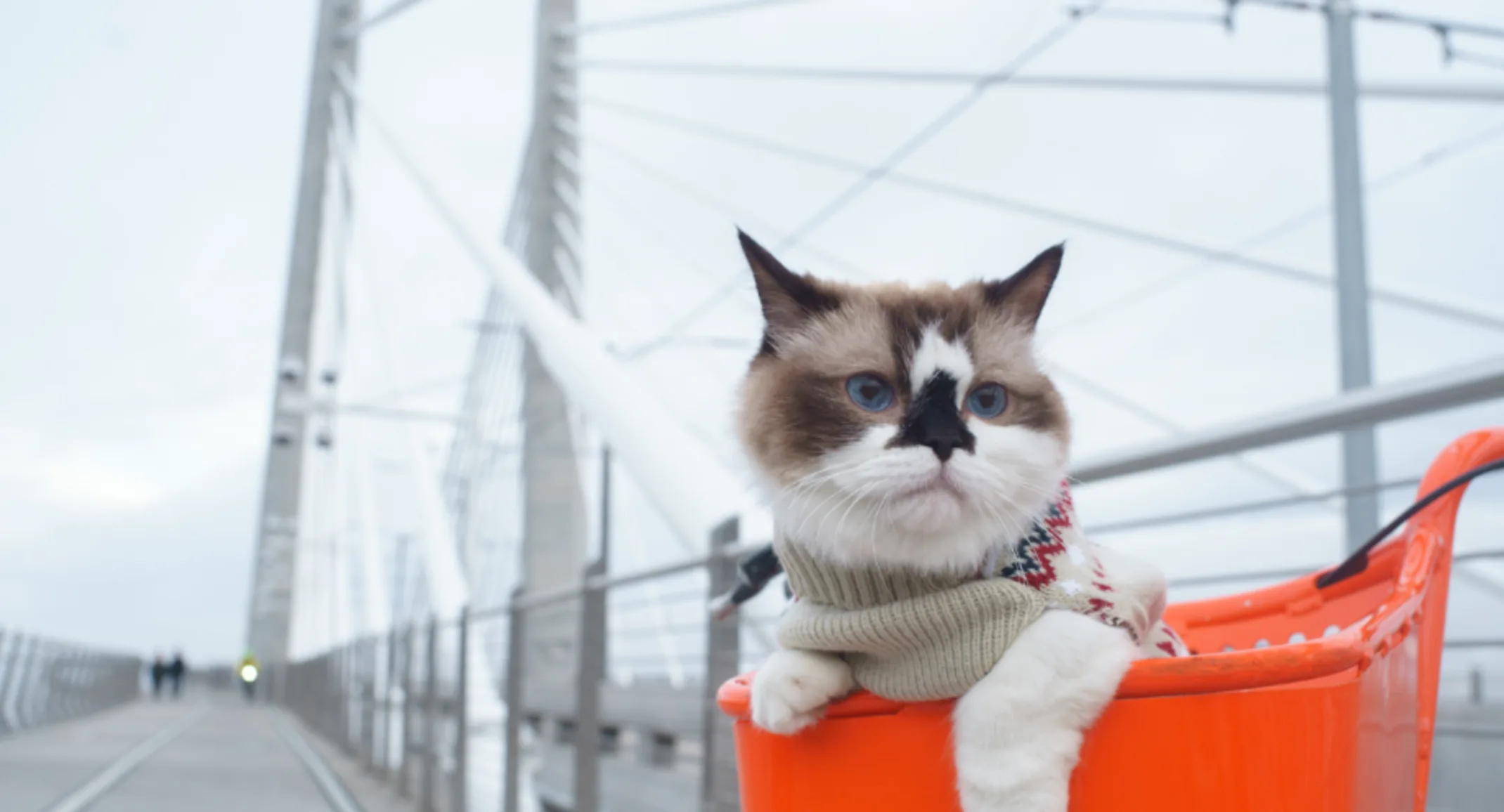Safe, Happy, Inside
Cats

For cats, the great outdoors can be anything but great.
There are many dangers to outdoor cats, no matter what kind of neighborhood they live in. They are exposed to contagious diseases, some of which are fatal. Traffic takes a huge toll on free-roaming cats, and while many people believe their cats are street-wise, no cat looks both ways when being chased by another animal. Other dangers to them include poisons, pet theft, and inhumane treatment by cruel people. The only way to safeguard both wildlife and your cat is to keep your cat inside.
What Does Your Indoor Cat Miss?
Cats that go outside can be subject to getting hit by a car, attacks by dogs or coyotes, cat fights, puncture wounds, abscesses, feline leukemia, poisoned food, getting lost or stolen, pesticides, parasites such as ticks, fleas, and intestinal worms, and cold, rainy weather. Most cats that grow up inside show no desire to leave the safety of home.
Benefits of Life Indoors
Indoor cats are usually healthier (so they live much longer), which saves on veterinary bills for treatment of contagious diseases, parasites, and abscesses from fights with other animals. While it is true that cats enjoy sunshine, fresh air, and exercise, they don’t need to go outside to be satisfied. Some creative planning on the part of their human guardians can help indoor cats live fully.
Obviously, it is best to keep a cat in from the beginning, especially if you are starting with a kitten or a young adult. Other cats who are accustomed to going outside can make life miserable for the entire household by clawing at windows, yowling and trying to bolt through open doors. But while the transition may take some time and patience, even the most confirmed outdoor cat can eventually be convinced of indoor comforts.
Tips for Making the Transition
Many cat behaviorists suggest a gradual approach to bringing an outside cat into the house. If your cat is outdoors for most of the day, bring her in for increasingly longer visits. You might time this transition as the weather gets colder. Most cats prefer warm, dry places, and by the end of the winter, yours could be converted to an indoor kitty.
If you want your cat to have safe, limited access to the outdoors, consider building an outside enclosure or run. These can be accessible from a window or pet door, and are most entertaining to cats when furnished with tree limbs, perching platforms, boxes, and toys.
Cats can be leash-trained so that they may enjoy the outdoors on supervised walks. All you need is a leash and a harness from which the cat cannot escape. Never hook the leash to the cat’s collar, but make sure the cat is always wearing a safety collar with i.d. tags. Your cat may resist wearing a harness at first, so let her become accustomed to it gradually. Put it on for brief periods indoors, and later, attach the leash and walk her around the house. When she becomes comfortable with that, venture outdoors for short trips. Do not tie a cat out on a leash or leave her unsupervised, even for a few minutes.
If your cat remains determined to get outside, you may have to “just say no” to going outdoors. Sometimes it’s better to just stop letting them outside rather than reinforcing their annoying behaviors. Remind family members, visitors, and housemates not to let the cat outside. Post signs near all doors, and if you live with children, teach them to close doors behind them. Be especially cautious with screen doors that may not latch tightly.
Enriching Indoor Environments
As your cat makes the transition to the great indoors, you can transform your living quarters into a veritable cat paradise. The more you give your cat to do, the happier she will be inside. Some things you can do are:
Expand upward with cat trees or kitty condos. The taller models, especially with multiple perches, make the most of vertical space and appeal to cats’ natural interest in heights.
Install perches or shelves near windows for your cat to sun herself.
Bird feeders placed near windows attract a variety of wildlife that your cat will love to watch.
Leave the window open a bit when the weather allows so your kitty can get fresh air. Make sure the screen is secure so she can’t jump or fall out.
Many cats enjoy chewing grass and plants. Pet stores and garden centers sell wheat or oat grass in small pots for indoor cats. Make sure the grass has not been treated with any chemicals before giving it to your kitty. Also make sure you remove any toxic plants from your house.
Redirecting Claw Action
Scratching is a natural and important behavior for cats. Well-placed scratching posts made of sisal, burlap, or corrugated cardboard can help your kitty fulfill her need to scratch without ruining your furniture. Scratching posts come in both vertical and horizontal varieties, so pick which one your cat likes best to ensure she uses it.
Cats in Toyland
The best way to keep your cat moving is through interactive play. By encouraging her to pounce, leap, and run laps around the living room, you can help keep your kitty from becoming a feline couch potato.
Often the best toys are the simplest. Cats love to chase catnip toys, ribbons or strips of fabric, and feathers dangled in front of them on wands or short poles. Don’t discount the most available toys around the house. Most cats love to explore paper bags, boxes, and baskets. They often find their own sources of amusement as well, so don’t be surprised if your cat abandons the expensive toys you’ve just bought for some plastic milk jug rings. Rotate favorites in and out of your cat’s toy box so she doesn’t get bored. Also try hiding toys around the house for her to find over time.
If your kitty still has a tough time adjusting to indoor-only life despite your efforts, Rescue Remedy, an herbal supplement for calming pets, it may help make both yours and your cat’s life easier during the transition period.
